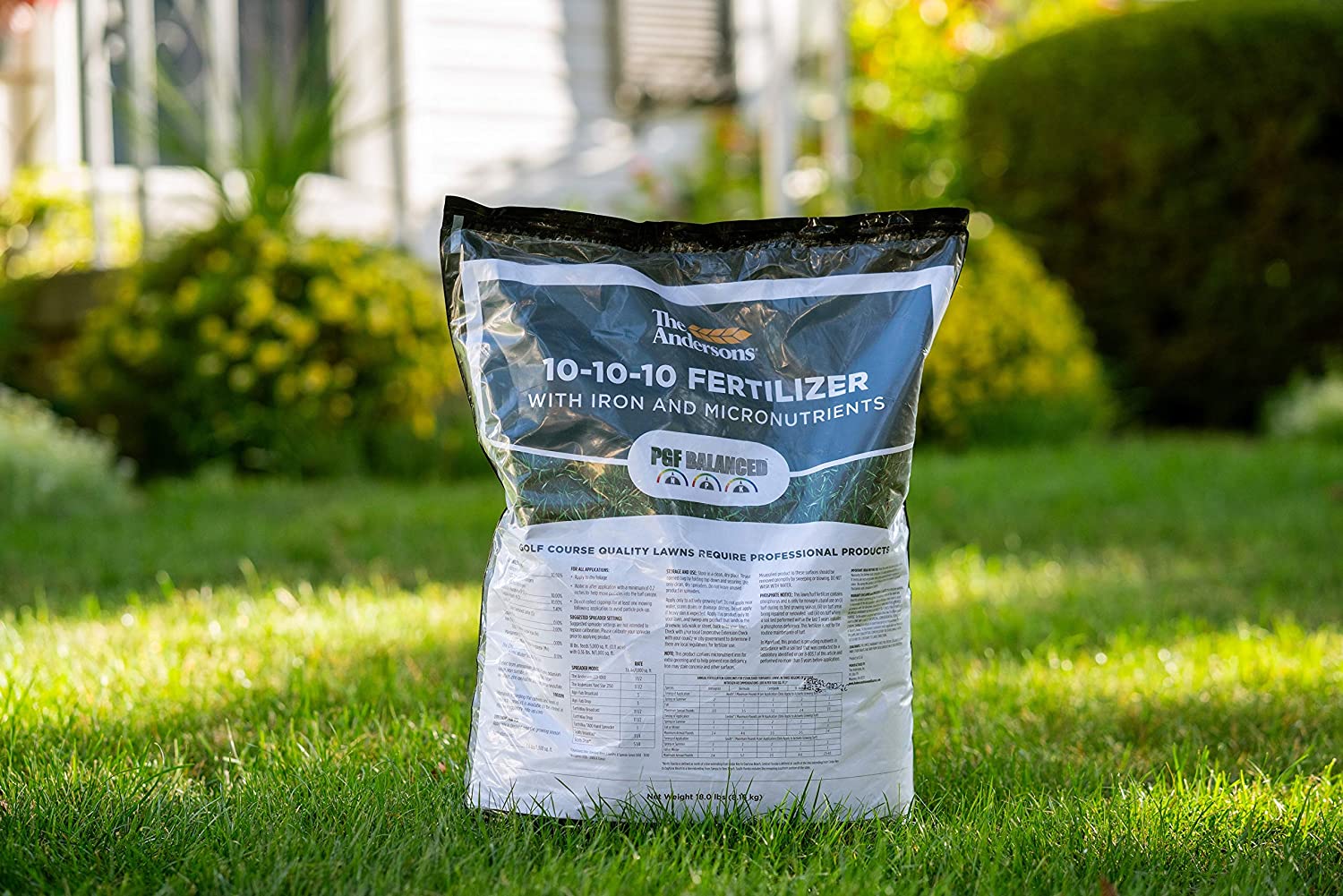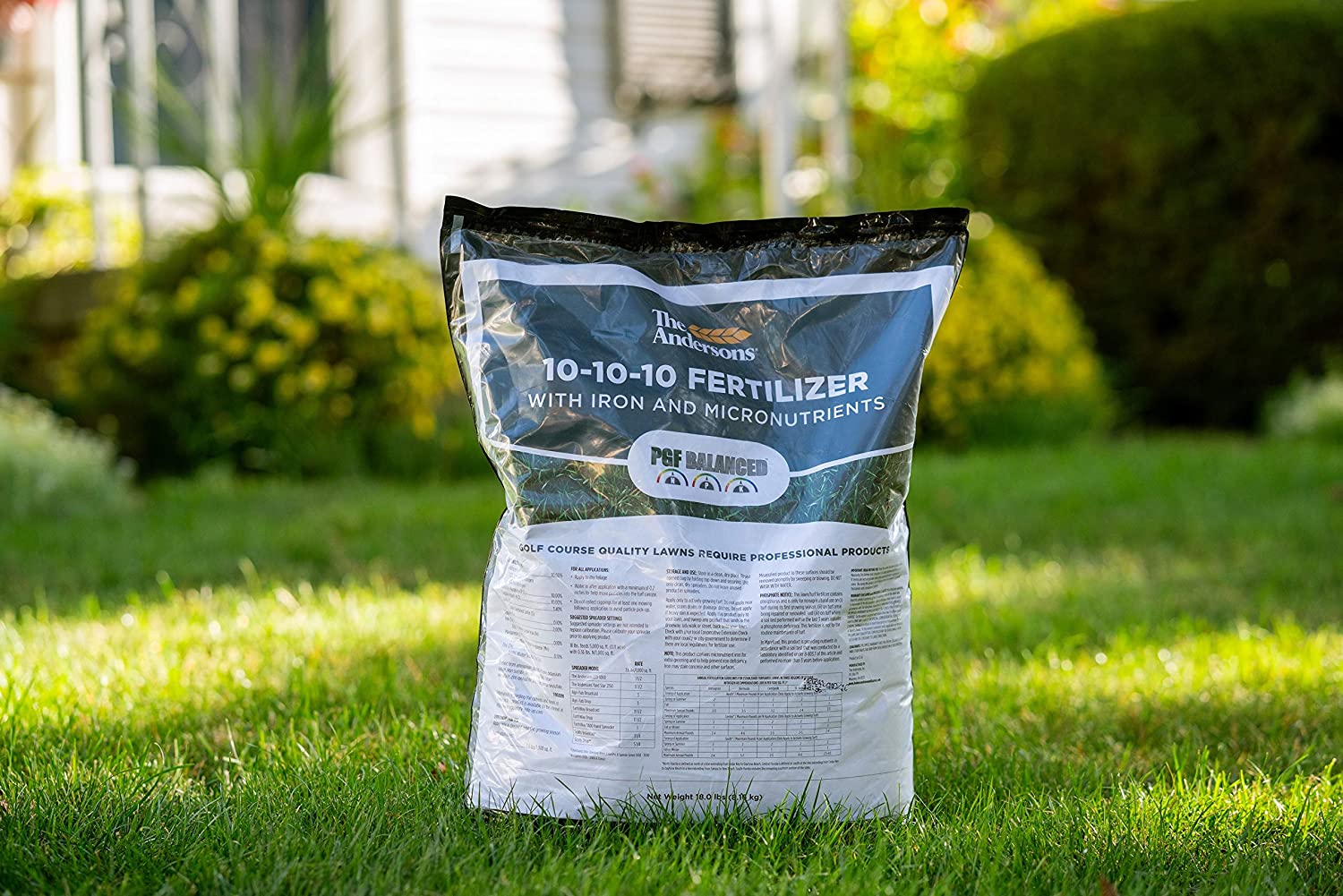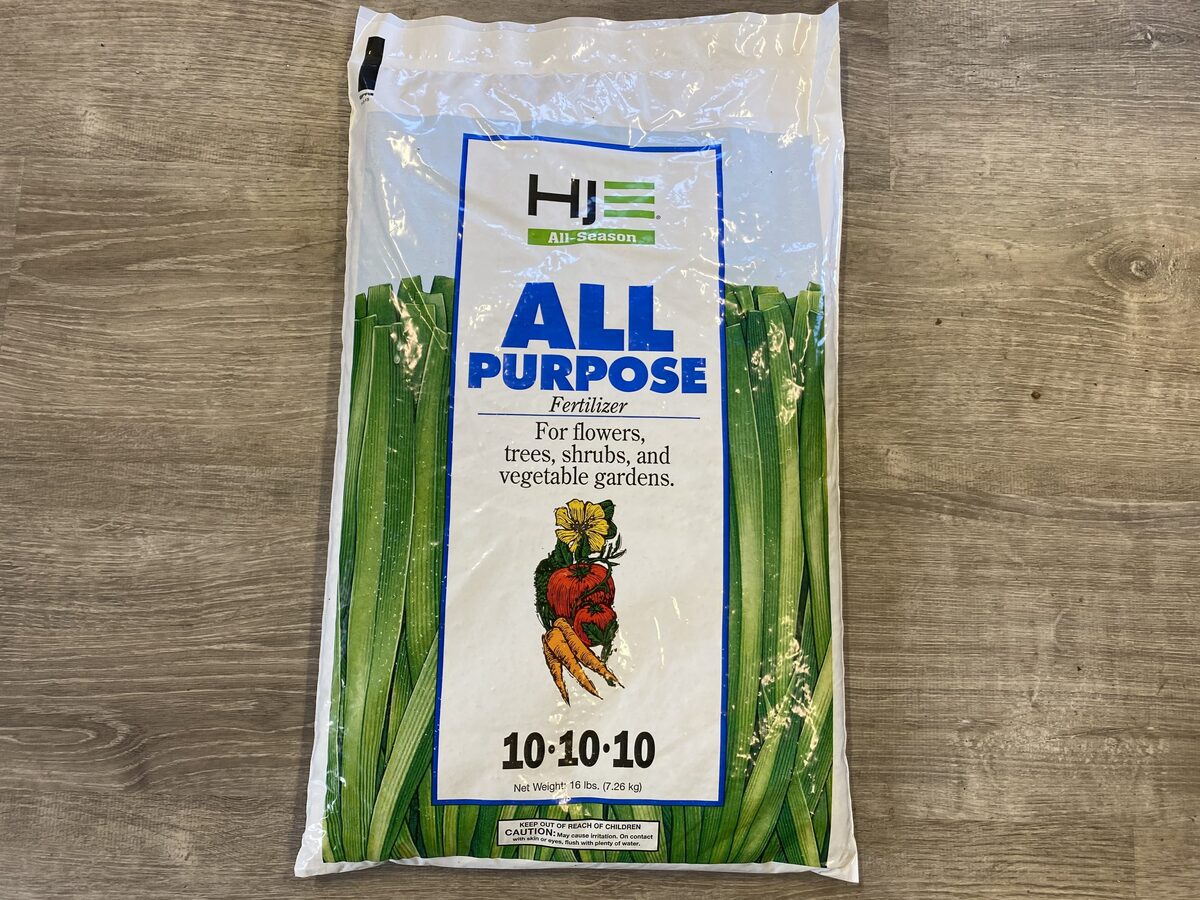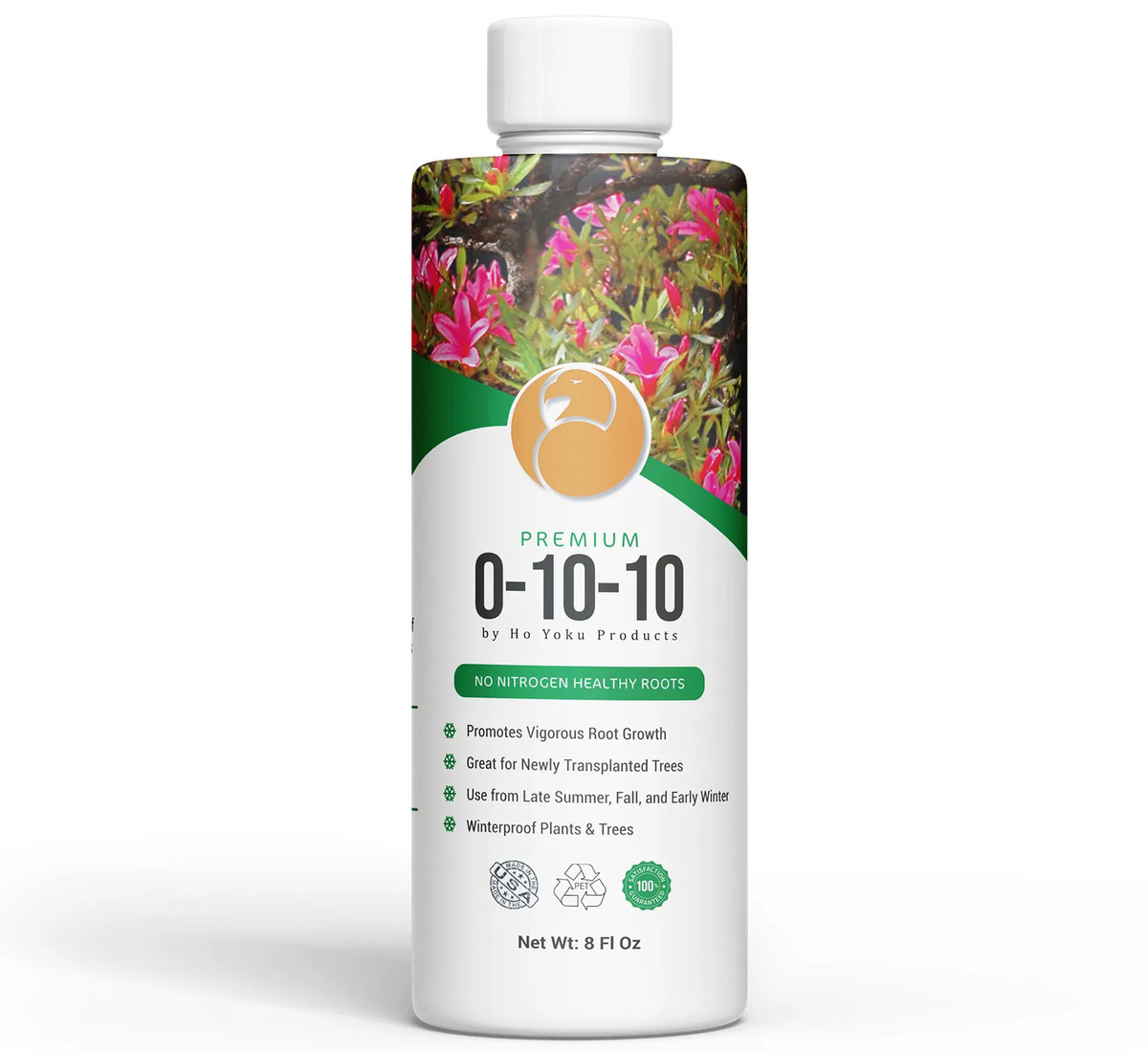Home>Gardening Basics>What Is 5-10-5 Fertilizer


Gardening Basics
What Is 5-10-5 Fertilizer
Modified: January 22, 2024
Discover the benefits of using 5-10-5 fertilizer and get started on enhancing your garden's growth. Transform your plants with this effective and balanced nutrient formula.
(Many of the links in this article redirect to a specific reviewed product. Your purchase of these products through affiliate links helps to generate commission for Chicagolandgardening.com, at no extra cost. Learn more)
Table of Contents
Introduction
Welcome to the world of gardening and agriculture! When it comes to nurturing and nourishing your plants, using the right fertilizer is crucial. While there are numerous types of fertilizers available, each with its own composition and purpose, one common and widely used option is 5-10-5 fertilizer.
5-10-5 fertilizer is a balanced blend of nutrients designed to promote healthy plant growth and development. Its unique formulation contains three key components: nitrogen (N), phosphorus (P), and potassium (K). These essential nutrients play a vital role in supporting various aspects of plant health, from establishing a strong root system to encouraging robust flowering and fruiting.
In this article, we will explore the details of 5-10-5 fertilizer, including its composition, benefits, application guidelines, and potential drawbacks. Whether you’re a seasoned gardener or just starting out, this information will help you understand the value and potential impact of using 5-10-5 fertilizer in your gardening endeavors.
Definition of 5-10-5 Fertilizer
5-10-5 fertilizer is a type of plant fertilizer that contains a balanced ratio of three key nutrients: nitrogen (N), phosphorus (P), and potassium (K). This ratio is typically represented as three numbers separated by hyphens (e.g., 5-10-5), which indicate the percentage by weight of each nutrient present in the fertilizer.
The first number, in this case, 5, represents the percentage of nitrogen in the fertilizer. Nitrogen is an essential nutrient for plant growth and plays a vital role in promoting leafy green foliage, strong stems, and overall plant development. It is responsible for supporting vegetative growth and enhancing the efficiency of photosynthesis.
The second number, 10, corresponds to the percentage of phosphorus in the fertilizer. Phosphorus is essential for root development, flowering, and fruiting. It aids in energy transfer processes within the plant, promotes healthy root systems, and enhances the production of flowers, fruits, and seeds.
The third number, 5, represents the percentage of potassium in the fertilizer. Potassium, also known as potash, is crucial for overall plant health and resilience. It assists in enzyme activation, water regulation, and nutrient transport within the plant. Additionally, it helps plants cope with stressors such as drought, disease, and pests.
By using a 5-10-5 fertilizer, you provide your plants with a carefully balanced combination of these essential nutrients. This balanced ratio ensures that your plants receive adequate nutrition to thrive and reach their full potential, promoting healthy growth, efficient photosynthesis, strong roots, abundant flowering, and bountiful harvests.
Components of 5-10-5 Fertilizer
5-10-5 fertilizer is composed of three primary nutrients: nitrogen (N), phosphorus (P), and potassium (K). These nutrients are vital for plant growth, development, and overall health.
The first component of 5-10-5 fertilizer is nitrogen. Nitrogen is an essential nutrient that plants need for their metabolic processes and overall growth. It plays a crucial role in the production of chlorophyll, the pigment responsible for photosynthesis. Nitrogen also promotes the formation of amino acids, which are the building blocks of proteins. This nutrient is especially important for encouraging lush foliage, strong stems, and vibrant green color in plants.
The second component is phosphorus. Phosphorus is essential for numerous plant functions, including energy transfer, root development, and flower and fruit production. It helps plants convert light energy into chemical energy, which is vital for various cellular processes. Phosphorus also plays a key role in promoting robust root growth, enabling plants to efficiently uptake water and nutrients from the soil. Additionally, phosphorus is involved in the formation of flowers, fruits, and seeds, ensuring productive harvests.
The third component is potassium. Potassium is crucial for various physiological processes in plants, such as enzyme activation, osmoregulation, and nutrient uptake. It helps regulate water movement within plant cells, maintaining turgor pressure and improving overall plant structure and strength. Potassium also plays a role in photosynthesis and the synthesis of carbohydrates and proteins. Furthermore, this nutrient enhances plants’ resilience to environmental stress, such as drought, disease, and pests.
These three components in 5-10-5 fertilizer work together to provide a balanced nutrient profile for plants. The nitrogen promotes vegetative growth, the phosphorus supports root development and flowering, and the potassium enhances overall plant health and stress resistance. By supplying these essential nutrients, 5-10-5 fertilizer helps ensure that plants have the necessary building blocks for optimal growth, vitality, and productivity.
Benefits of Using 5-10-5 Fertilizer
Using 5-10-5 fertilizer offers a wide range of benefits for your plants and garden. Let’s explore some of the key advantages of incorporating this balanced fertilizer into your gardening routine:
- Promotes balanced plant growth: The balanced ratio of nutrients in 5-10-5 fertilizer ensures that plants receive a sufficient supply of nitrogen, phosphorus, and potassium. This balance is essential for promoting overall plant growth, from establishing strong roots to developing healthy foliage and abundant flowers.
- Encourages root development: The phosphorus content in 5-10-5 fertilizer promotes robust root growth. Strong roots enable plants to access water, nutrients, and oxygen from the soil, enhancing their overall health and resilience.
- Enhances flowering and fruiting: The phosphorus component of 5-10-5 fertilizer plays a crucial role in flower formation and fruit development. By providing an adequate supply of phosphorus, this fertilizer encourages plants to produce vibrant and abundant blooms, as well as healthy and flavorful fruits.
- Improves nutrient uptake: Potassium in 5-10-5 fertilizer helps enhance nutrient absorption and transport within plants. This improves overall nutrient utilization and ensures that plants have access to the required elements for optimal growth and development.
- Strengthens plant resistance: The potassium content in 5-10-5 fertilizer boosts plants’ resilience to environmental stressors, such as drought, disease, and pests. It enhances their ability to withstand adverse conditions and recover quickly, promoting healthy and vigorous growth.
- Convenient and easy to use: 5-10-5 fertilizer is commercially available in various forms, including granules, powders, and liquids. These formulations make it easy to apply and incorporate into your gardening routine, ensuring that your plants receive the nutrients they need for optimal growth.
By using 5-10-5 fertilizer, you can enjoy the benefits of balanced plant growth, improved flowering and fruiting, and enhanced resistance to stressors. This fertilizer provides your plants with the essential nutrients they need to thrive and flourish, resulting in a vibrant and productive garden.
Application and Usage Guidelines
When using 5-10-5 fertilizer, it’s important to follow some application and usage guidelines to ensure optimal results. Here are some key tips to keep in mind:
- Determine the appropriate amount: The amount of 5-10-5 fertilizer to use will depend on various factors, such as the type of plants you’re growing, their nutrient requirements, and the size of your garden. Follow the manufacturer’s instructions for specific dosage recommendations, and adjust accordingly based on your plants’ needs.
- Apply at the right time: It’s essential to apply 5-10-5 fertilizer at the appropriate time. Generally, it’s best to apply this fertilizer during the growing season, when plants are actively developing, such as early spring or early summer. Avoid applying in extreme weather conditions, such as during heatwaves or freezing temperatures.
- Spread evenly: When applying 5-10-5 fertilizer, ensure that it is spread evenly across the soil surface. This helps prevent concentration of nutrients in one area and ensures uniform nutrient distribution to the plant roots. Use a spreader or apply by hand, taking care to cover the entire root zone of the plants.
- Water after application: After applying 5-10-5 fertilizer, water the plants thoroughly. This helps activate the nutrients and ensures their absorption by the roots. Watering also helps prevent any potential fertilizer burn and aids in distributing the nutrients throughout the soil.
- Reapply as needed: Depending on the specific fertilizer formulation and the needs of your plants, you may need to reapply 5-10-5 fertilizer periodically. Follow the recommended frequency for application, typically every 4-6 weeks, to maintain consistent nutrient supply and support plant growth.
- Store properly: Store 5-10-5 fertilizer in a cool, dry place away from direct sunlight and moisture. This helps maintain its effectiveness and prevents clumping or deterioration.
By following these application and usage guidelines, you can ensure effective and efficient use of 5-10-5 fertilizer. Remember to consider the specific needs of your plants and adjust the application rates and frequency accordingly. Consistent and appropriate use of this fertilizer will help provide your plants with the necessary nutrients for healthy growth and abundant yields.
Potential Drawbacks of 5-10-5 Fertilizer
While 5-10-5 fertilizer offers numerous benefits, it’s important to be aware of some potential drawbacks associated with its use. Understanding these drawbacks will help you make informed decisions about your fertilizer choices and ensure the best outcomes for your plants and garden. Here are some potential drawbacks to consider:
- Potential nutrient imbalances: 5-10-5 fertilizer provides a balanced ratio of nutrients, but it may not be suitable for all plant types or soil conditions. Some plants may require specific nutrient ratios, and using the same fertilizer for different plants may result in nutrient imbalances. It’s important to understand the specific nutrient requirements of your plants and make fertilizer choices accordingly.
- High phosphorus content: The high phosphorus content in 5-10-5 fertilizer can be advantageous for flowering and fruiting plants. However, excess phosphorus in the soil can contribute to water pollution and may be harmful to aquatic environments. To prevent environmental damage, it’s essential to use 5-10-5 fertilizer judiciously and avoid over-application.
- Over-fertilization risks: Using excessive amounts of 5-10-5 fertilizer can lead to over-fertilization, which can be detrimental to plants. Over-fertilization can result in nutrient burn, where the excess nutrients cause damage to plant roots, leaves, and overall health. Carefully follow the recommended dosage guidelines and avoid over-applying 5-10-5 fertilizer to prevent these risks.
- Potential runoff: When applying 5-10-5 fertilizer, there is a risk of runoff if applied too close to water bodies or during heavy rainfall. Runoff can carry excess nutrients into nearby water sources and contribute to water pollution. To minimize runoff, avoid applying fertilizer near water bodies and follow sustainable gardening practices, such as incorporating organic matter and using mulch to reduce nutrient loss.
- Limited micronutrient content: While 5-10-5 fertilizer provides essential macro-nutrients (nitrogen, phosphorus, and potassium), it may not contain an adequate amount of micronutrients. Micronutrients, such as iron, zinc, and manganese, are also important for plant health and development. It’s important to ensure that your plants have access to a balanced range of macro- and micronutrients to thrive.
By being aware of these potential drawbacks and taking appropriate measures, you can effectively mitigate any risks associated with the use of 5-10-5 fertilizer. Evaluate the specific needs of your plants, consider the soil conditions, and make informed decisions to ensure that your plants receive the right balance of nutrients for optimal growth and vitality.
Comparison with Other Types of Fertilizers
When it comes to fertilizers, there are various types available on the market, each with its own nutrient composition and purpose. Let’s compare 5-10-5 fertilizer with other commonly used types to understand the differences and advantages:
- Complete balanced fertilizer: Unlike 5-10-5 fertilizer, which contains a balanced ratio of nitrogen, phosphorus, and potassium, complete balanced fertilizers have equal or similar percentages of all three nutrients (e.g., 10-10-10). These fertilizers are versatile and can be used for various types of plants throughout their growth stages.
- High-nitrogen fertilizer: High-nitrogen fertilizers, such as 20-10-10, contain a higher percentage of nitrogen compared to phosphorus and potassium. They are suitable for promoting leafy growth, making them ideal for lawns, foliage plants, and crops that primarily require lush green foliage.
- Bloom boosters: Bloom booster fertilizers have higher levels of phosphorus and potassium, such as 0-10-10 or 5-15-10. These fertilizers are specifically designed to encourage flowering and fruiting in plants. They are often used during the blooming phase or for fruit-bearing trees and shrubs.
- Organic fertilizers: Organic fertilizers are derived from natural sources, such as compost, manure, or plant-based materials. They provide a slow-release of nutrients, improving the soil structure and promoting long-term plant health. Organic fertilizers are often favored for their environmental benefits and the improvement they bring to soil fertility.
- Specialty fertilizers: Specialty fertilizers are designed for specific plant needs or soil conditions. For example, acid-loving plants like azaleas and blueberries benefit from using a specialized acidic fertilizer. Slow-release fertilizers are another type of specialty fertilizer, which gradually release nutrients over an extended period of time.
When comparing 5-10-5 fertilizer with other types, it’s important to consider the specific requirements of your plants, the stage of growth, and the soil conditions. The balanced nutrient ratio of 5-10-5 fertilizer makes it suitable for general-purpose use, promoting overall plant growth, root development, and flowering. However, different plants and situations may benefit from alternative fertilizers tailored to their specific needs.
Ultimately, the choice of fertilizer depends on factors such as the type of plants you are growing, their nutrient requirements, and the overall objectives of your gardening efforts. It’s always recommended to understand the specific needs of your plants and consult with gardening experts to determine the most appropriate fertilizer type for optimal results.
Conclusion
5-10-5 fertilizer is a versatile and widely used option for promoting healthy plant growth and development. With its balanced ratio of nitrogen, phosphorus, and potassium, this fertilizer provides the essential nutrients that plants need to thrive.
By incorporating 5-10-5 fertilizer into your gardening routine, you can enjoy a range of benefits. It promotes balanced plant growth, enhances root development, encourages flowering and fruiting, and improves nutrient uptake. Additionally, the potassium component in this fertilizer helps strengthen plants’ resilience to environmental stressors.
However, it’s important to be aware of potential drawbacks associated with 5-10-5 fertilizer. These include the risk of nutrient imbalances, potential runoff, and the need to avoid over-fertilization. By following application and usage guidelines, you can mitigate these risks and ensure optimal results.
Comparing 5-10-5 fertilizer with other types of fertilizers, we can see that it offers a balanced nutrient ratio suitable for general-purpose use. However, specific plant needs, growth stages, and soil conditions may require alternative fertilizer options.
In conclusion, 5-10-5 fertilizer is a valuable tool for any gardener looking to provide their plants with the essential nutrients they need to thrive. By understanding your plants’ requirements, following application guidelines, and considering the alternatives, you can make informed decisions and achieve a vibrant and productive garden.









